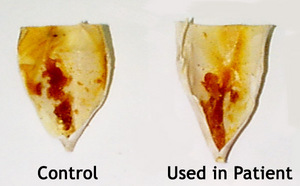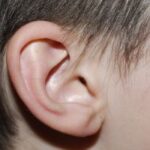People across the globe practice the alternative therapy of ear candling in hopes of removing a build up of wax and toxins from their ears. Yet, is this procedure truly effective, or a massive hoax that has lived on for centuries?
While some have never heard of the practice, ear candling is anything but new. It is believed to date back as far as 2500 B.C. Parchment scrolls have been discovered in the Orient, describing the use of such candles, also referred to as ear coning. Ancient cultures, including the Egyptians, made reference to the practice.
Ear candles are available at most local health food stores in the U.S., as well as some pharmacies. They are most often made of cotton or linen that is wound into a cone or tube shape, soaked in wax and then allowed to harden. The final product measures nine to twelve inches in length.
To practice “ear candling,” the candle is placed through the hole of a special plate made just for the procedure. The plate catches any falling wax to help avoid burns and injury. The candle is placed into the external ear canal and then lit on the opposite end. It is left to burn for approximately ten minutes.
The belief is that ear candles create a vacuum as they burn, which draws fluid and wax from the ear canal. Some believers in the practice say that the smoke from the burning candle actually dries out the ear canal, which stimulates the body’s natural excretion of wax and other debris from the body.
When the process is done as directed, the person will certainly discover a fair amount of what appears to be ear wax, pulled into the lower portion of the ear candle.
However, the journal Laryngoscope published a study which looked at the value and safety of ear candles. Researchers proved that ear candles do not create a vacuum. In fact, within their study, some subjects actually had candle wax deposited into their ears.
The same journal article also revealed the results of a survey involving 122 otolaryngologists. Within the group, 21 ear injuries were identified in patients as a result of using ear candles.
The United States Food and Drug Administration (FDA) has classified ear candles as medical devices. They warn that the practice of ear candling creates a serious risk of fire, burns and injury to the ear, surrounding skin and hair. In 1998 the FDA gave a strict advisory to Nature’s Way, oa company in West Columbia, South Carolina, that it would be illegal for them to continue marketing ear candles due to the fact that they are unapproved devices that would be dangerous to use as suggested within their catalog.
Because of their risks, it is already illegal for ear candles to be sold in Canada, and the country has issued directives which prohibit their importation.
Five students from Creighton University performed their own test on ear candling. One candle was burned while inserted into the ear of a volunteer. Another identical ear candle was burned while inserted into a clean, dry Erhlenmeyer flask. Both were lit for the same amount of time, as well as extinguished in identical manners.
Once the burning was complete, both candles did appear to contain a considerable amount of a yellow-brown waxy substance. The students weighed the candles, as well, which showed no significant difference.
There conclusions were that the source of the wax substance came from the actual candle and not from the ear of the volunteer.
While the research done on ear candling has been limited, these professional and amateur studies continue to show that ear candles are not effective. Because wax is such a sticky substance, the negative pressure required to actually pull the wax from within the ear canal would have to be so powerful that the eardrum would rupture in the process.
So, if ear candling is alternative medicine’s biggest bluff, what can a person do about ear wax?
First, remember that earwax is normal and important for the health of your ear. It is a part of your body’s self-cleaning system. Only a very small minority of people actually produce such large amounts of earwax that it becomes compacted and needs medical attention.
For the rest of us, Dr. Robert K. Jackler provides some basic advice. He is a professor of otolaryngology and neurological surgery at the University of California, San Francisco, and the editor-in-chief of The American Journal of Otology.
“Earwax slowly migrates toward the opening of the ear canal and is sloughed off,” said Jackler. “If you want, you can take a washcloth and, using your finger, gently wash the opening of your ear.”
No flame required.
Sources used for this article:
http://altmed.creighton.edu/ear/experiment.htm
http://altmedicine.about.com/cs/govtregulation/a/EarCandle.htm
http://www.ncbi.nlm.nih.gov/entrez/query.fcgi?db=pubmed&list;_uids=8849790&cmd;=Retrieve&indexed;=google
http://www.colonhealth.net/ear_candling/candhist.htm
http://www.quackwatch.org/01QuackeryRelatedTopics/candling.htmlhttp://www.webmd.com/content/article/42/1685_50320



